If you are a business owner or an eCommerce professional, chances are you already know how important SEO is in ensuring the success of your website. Search engine optimization (SEO) consists of various strategies and tactics to increase visibility, maximize organic traffic, and ultimately drive sales for an online store. In today’s competitive digital landscape, there is no question that ramping up your SEO can provide massive returns! Below we’ll outline some of the most effective eCommerce SEO best practices to help you get ahead in the eCommerce industry.
Table of Contents
What Is eCommerce SEO?
eCommerce SEO, also known as eCommerce search engine optimization, is the practice of optimizing an online store’s website and product pages to improve their visibility and rankings in search engine results pages (SERPs). It involves implementing various strategies and techniques to attract organic (non-paid) traffic from search engines like Google, Bing, and Yahoo.
The primary goal of eCommerce SEO is to drive targeted traffic to an online store, increase brand visibility, and ultimately boost conversions and sales. By optimizing the website’s content, structure, and user experience, eCommerce businesses can improve their chances of appearing higher in search results when potential customers search for relevant products or services.
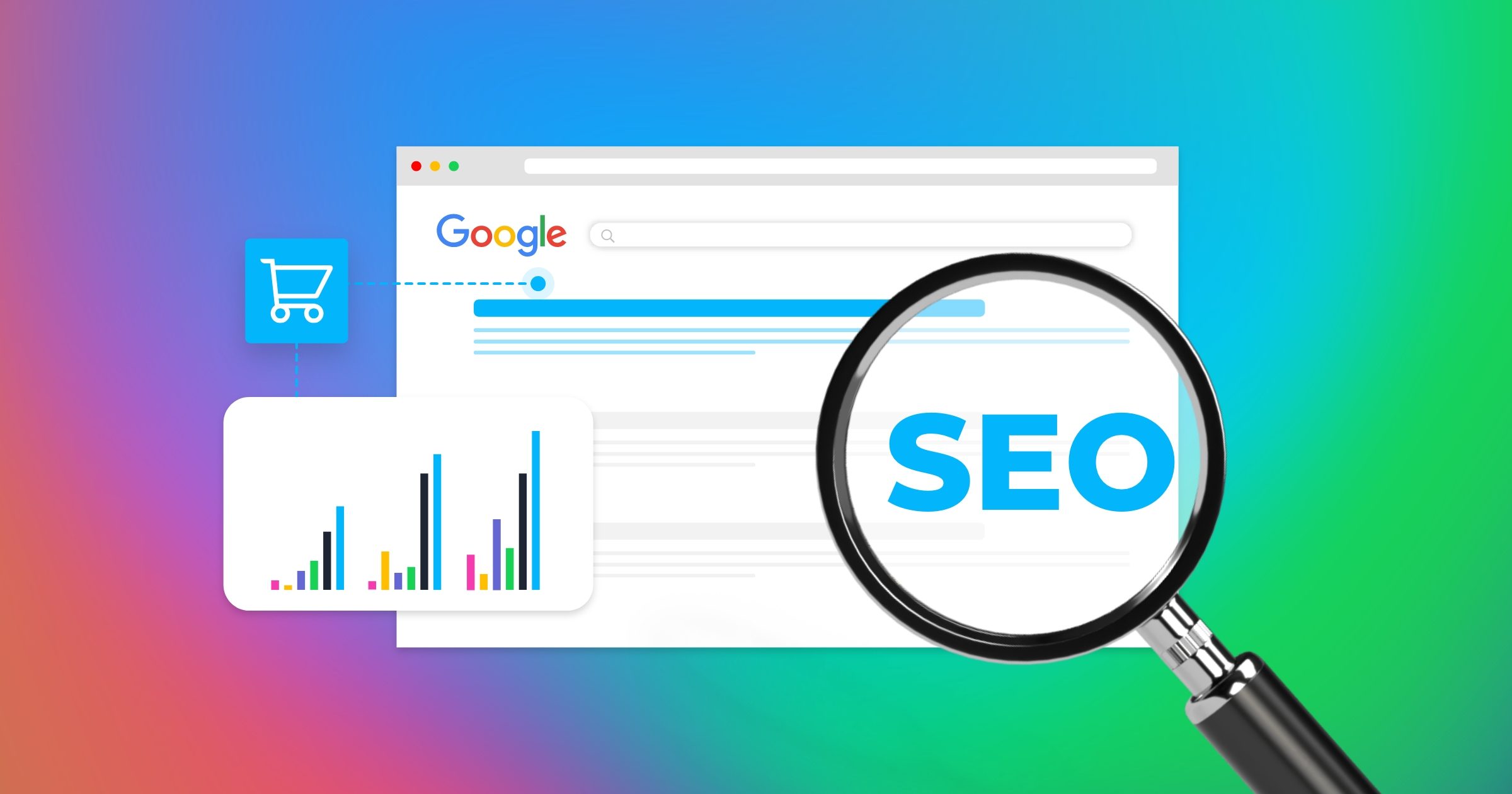
Paid search can also get you visitors, but SEO is considerably cheaper in the long run. You should still optimize for search because ad blockers and ad blindness might limit the impact of sponsored search.
eCommerce SEO often entails improving your website’s navigation, internal links, metadata, headlines, and product descriptions for both search engine optimization and user experience. You should have a specific page for each product you offer, one that is optimized for search engine traffic.
You also shouldn’t overlook your website’s static, non-product-focused pages, such as the Homepage, About page, F.A.Q page, Blog articles, Help center answers, and Contact page.
Overall, eCommerce SEO aims to improve the online visibility and competitiveness of an eCommerce website by implementing a combination of strategies tailored to the specific needs and goals of the business. By ranking higher in search engine results, eCommerce businesses can attract more targeted organic traffic, increase brand exposure, and ultimately drive more sales and revenue.
Why Is eCommerce SEO So Important?
When consumers are in need of a particular product or service, their instinct is to turn to Google for assistance. They embark on searches to explore options, gather tips, make comparisons, and gather other relevant information that aids in making informed decisions.
However, if your website fails to appear in the search engine results pages (SERPs), you miss out on valuable opportunities to engage with qualified and interested eCommerce customers. Although your products may exist in the vast expanse of the internet, the question remains: are they easily discoverable?
This is precisely where eCommerce SEO steps in to provide a solution. It offers you a means to reach your target audience organically, without having to rely solely on paid advertisements. Once you successfully drive traffic to your website, you can captivate visitors with top-notch products, captivating copy, and compelling calls to action.

Additionally, optimizing your site according to Google and other search engine guidelines can bring many other benefits to your business:
- Cost-Effective Marketing: Compared to other forms of digital marketing, such as paid advertising, eCommerce SEO can be a cost-effective long-term strategy. While paid ads can deliver immediate results, they require ongoing investment. On the other hand, once your eCommerce website starts ranking well in search results, you can continue to receive organic traffic without additional costs.
- Trust and Credibility: High search engine rankings are often associated with trust and credibility. When your eCommerce website appears on the first page of search results, users are more likely to view your brand as reputable and trustworthy. eCommerce SEO helps build authority and establish your brand as a reliable source of products or services.
- Better User Experience: eCommerce SEO involves optimizing your website’s structure, navigation, and content to provide a better user experience. This includes factors like faster page load times, mobile-friendliness, and easy navigation. A positive user experience leads to increased engagement, longer time spent on your site, and higher chances of conversions.
- Long-Term Results: While SEO requires time and effort to achieve results, the impact is long-lasting. Once your eCommerce website ranks well for relevant keywords, it can maintain its position with ongoing optimization and maintenance. This provides a steady stream of organic traffic and can lead to sustainable business growth over time.
- Competitive Advantage: In the competitive landscape of eCommerce, having a strong SEO strategy can give you an edge over your competitors. By outranking them in search results, you increase your visibility and make it more likely for potential customers to choose your products or services over others.
eCommerce SEO best practices
Here, we will explore valuable tips for eCommerce websites that may be lacking in the realm of SEO. If your goal is to enhance the discoverability of your products and improve search engine rankings, implementing a comprehensive eCommerce SEO strategy is essential. By ensuring you address each item on the checklist, you can significantly enhance the effectiveness of your overall strategy.
Technical SEO for Your Online Store
Technical SEO involves optimizing various technical elements to ensure that search engines can crawl, index, and understand your website effectively. By addressing technical SEO factors, you can enhance your website’s visibility, user experience, and search engine rankings.
Set Your Domain and URLs
Setting the right domain is crucial for the success of your website and its visibility in search engine results. You should select a domain name that reflects your brand and is relevant to your business or industry. This name needs to be easy to spell and remember, avoid numbers or hyphens if possible.
After that, you have to select a TLD (Top-Level Domain) that is appropriate for your business and target audience. The top-level domain is the extension that follows the domain name (e.g., .com, .net, .org). Popular choices include .com, which is widely recognized, or country-specific TLDs if you primarily serve customers in a specific country.

When you have your domain name and decide on your TLD, register your domain right away. Choose a trusted registrar that offers reliable service and good customer support and ensure that you provide accurate contact information during the registration process.
Moreover, remember to secure your website with an SSL certificate to enable HTTPS encryption. This protects user data and helps establish trust with both visitors and search engines. HTTPS is also a ranking signal, positively impacting your SEO efforts.
However, setting your preferred domain name is not enough, you also need to review your URLs. Having messy URLs can pose a significant problem for many eCommerce stores, hindering their ability to get indexed and ranked by search engines. Thus, setting the right URLs plays a crucial role in eCommerce SEO. Let’s break down the URL structure to gain a complete understanding and explore some useful tips for setting URLs that can benefit your eCommerce store.
https://magenest.com/en/ecommerce-seo-best-practices/
Let’s use this blog’s link as an example:
- The https:// at the beginning indicates that the website is secure.
- www represents the subdomain.
- magenest serves as the root domain within this URL structure.
- .com is the top-level domain.
- /en/ is the slug, while /ecommerce-seo-best-practices/ functions as the permalink.
Now that you comprehend the components of URLs, it’s crucial to focus on optimizing the slugs and permalinks for your pages. Many stores have ambiguous URLs that confuse both Google and users about the products or services being offered. Below are some best practices that you can apply to your website URLs:
- Keep it user-friendly: Search engines prioritize delivering the best possible user experience. If your URLs are easily understandable, they have a higher chance of being ranked favorably.
- Incorporate primary keywords: Including your primary keyword in the URL can improve your chances of achieving higher rankings in search engine results pages (SERPs).
- Keep it concise: Ideally, URLs should be shorter than 50 characters, as excessively long URLs can appear cluttered and may be truncated in search results.
- Avoid keyword stuffing: Search engine bots have become smarter and can no longer be deceived by excessive keyword stuffing. Maintain a balanced and natural approach when including keywords in your URLs.
- Ensure coherence between URL and page content: It is essential that your URL clearly reflects the content of the page. A mismatch between the URL and the page’s content can be detrimental to your SEO efforts.
Optimize Your Site Structure
Optimizing your eCommerce site structure is an essential step. A well-organized site structure plays a vital role in enhancing the user experience and facilitating efficient navigation for both visitors and search engine crawlers. It also aids in the distribution of link equity, which influences the ranking strength of your website. Here’s a suggested site structure that works well for eCommerce stores:
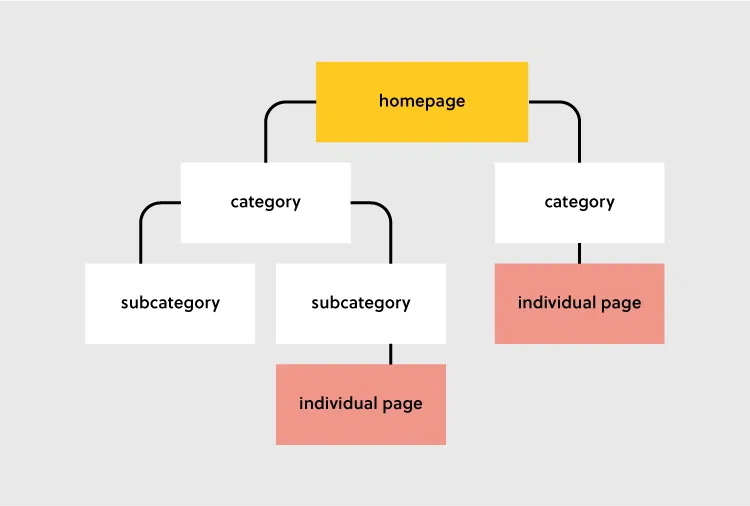
The diagram clearly illustrates how a well-structured site facilitates seamless navigation for users and search engines. When starting your online store website, you have two primary options for site structures:
Homepage > Category Pages > Product Pages
This structure starts with a clear and informative homepage that leads visitors to relevant category pages. From there, users can further explore subcategories or directly access specific product pages.
Homepage > Category Pages > Sub-Category Pages > Product Pages
This structure provides additional levels of organization by including sub-category pages between category and product pages. This allows for more refined categorization and helps users locate products more precisely.
Remember, when building your site structure, prioritize the needs and preferences of your customers.
In addition to product and category pages, it is crucial to include an About page and a Contact page on your eCommerce website. These pages contribute to establishing credibility and trustworthiness for both shoppers and search engines. Furthermore, incorporating a search box on your site is essential which we will discuss later. Although it may not directly impact SEO, it greatly improves overall eCommerce optimization by helping visitors find specific products or information quickly, potentially leading to increased revenue.
Check Your Mobile-responsiveness
In today’s digital landscape, mobile devices account for a significant portion of internet traffic, with nearly 66% originating from mobile devices. Failing to prioritize mobile responsiveness for your website can be detrimental to your online presence. As an eCommerce store, it is imperative to cater to the needs of mobile users and optimize their browsing experience.
Adapting your website to various screen sizes and ensuring mobile responsiveness is essential to minimize bounce rates, attract more traffic, and ultimately drive better business results. By providing a seamless and user-friendly experience on mobile devices, you can capture the attention of potential customers, keep them engaged, and increase the likelihood of conversions.

Mobile responsiveness encompasses a range of factors, including a responsive design that adjusts the layout and content dynamically based on the user’s screen size. It involves optimizing elements such as fonts, images, navigation menus, and interactive elements to ensure they are easily accessible and visually appealing on mobile devices.
By embracing mobile responsiveness, you tap into a significant portion of your target audience, allowing them to explore your products or services effortlessly. This not only enhances the user experience but also improves your website’s search engine visibility, as mobile-friendly websites are favored by search engines.
To achieve mobile responsiveness, consider implementing responsive web design techniques, optimizing page load speed for mobile devices, and conducting thorough testing across different mobile devices and screen sizes. By prioritizing mobile responsiveness, you demonstrate your commitment to meeting the needs of your mobile audience, fostering a positive brand image, and driving better business outcomes.
After implementing some techniques mentioned above, it is crucial to test the mobile-friendliness of your website. Google’s Mobile-Friendly Test is a valuable tool that can assist you in this process. By analyzing your website, it provides insights and recommendations to enhance its mobile performance.
Test Your Page Loading Speed
For some time now, Google has been placing increased importance on page speed as a ranking factor. From a practical standpoint, faster page speed allows buyers to connect with the products they are searching for more quickly and efficiently.
A slow-loading page can significantly impact your traffic and SEO, causing potential customers to abandon your site. A fast website not only improves user experience but also aligns with Google’s preference for providing valuable and efficient search results.
Creating an eCommerce website that loads quickly can be a challenge, but there are several quick wins you can implement to immediately improve your page speed performance. Here are a few suggestions:
- Reduce image file sizes: There are several ways to achieve this. If you have the budget, consider using a Content Management System (CMS) to host your images, audio, and videos. This can help alleviate the strain on your website. Alternatively, you can integrate with a file-optimizing app, which can efficiently reduce the file sizes of your images.
- Minimize CSS and JavaScript: Streamline your page speed by removing any unnecessary code and using shorter variables and functions. The less data required to load your web pages, the better it is for SEO. You can use Google’s free PageSpeed Insights tool to gain an overview of the metrics they use to measure page performance and receive recommendations for improvement.
- Implement lazy loading: Lazy loading is a technique where images, videos, and audio files are loaded only when a user scrolls to that specific section of the webpage, instead of loading everything at once. Given that eCommerce websites often have numerous product images and videos, implementing lazy loading can have an immediate positive impact on your SEO and overall performance. Some eCommerce site builders have built-in lazy loading options, while others may require integration with a lazy loading app.
By implementing these strategies and following the recommendations provided by PageSpeed Insights, you can enhance the loading speed of your eCommerce site and improve user experience. While certain limitations exist within the platform, there are still viable steps you can take to optimize your site’s performance and align with search engine preferences.
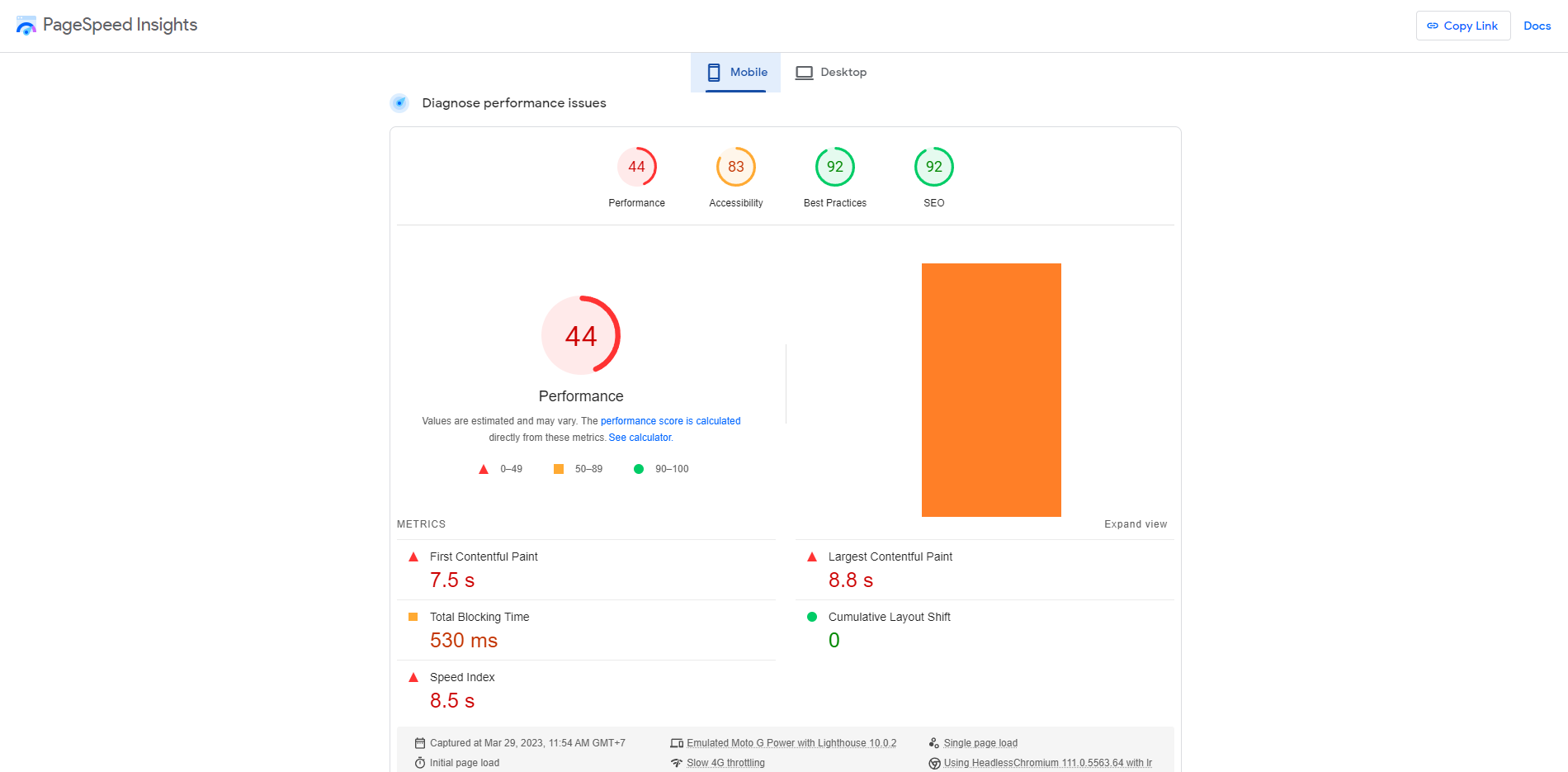
Additionally, you should notice your website hosting because as you may know, hosting plays an important role in improving your website loading speed, especially eCommerce websites. Choosing an appropriate hosting provider can enhance your website performance in many ways. For example, shared hosting plans, where resources are split between multiple websites, can lead to slower loading times. A dedicated or VPS (Virtual Private Server) hosting plan with more resources allocated to your website can help improve loading speeds. Or if you use a hosting platform with limited bandwidth, it can lead to slow loading times, particularly during high-traffic periods or when users access large files like images or videos. Opt for a hosting plan with sufficient bandwidth to handle your website’s traffic and the size of your files.
XML Sitemaps and Robots.txt Files
XML sitemaps and robots.txt files are essential elements in optimizing your website’s visibility and managing search engine crawling. Let’s explore the purpose and benefits of these two components.
An XML sitemap is a file that lists all the pages of your website and provides important information about each page, such as the last modification date, frequency of updates, and priority. It serves as a roadmap for search engines, guiding them to discover and index your web pages more efficiently. Here are some best practices you should follow with your sitemap file:
- Include all relevant pages: Ensure that your XML sitemap includes all important pages of your website, including landing pages, product pages, blog posts, and any other content you want search engines to discover and index.
- Update your XML sitemap regularly: Whenever you add new pages, make significant changes to existing ones, or remove outdated content, update your XML sitemap accordingly. This helps search engines stay informed about your website’s latest content.
- Submit your XML sitemap to search engines: Submitting your XML sitemap to search engines like Google and Bing helps them discover and crawl your web pages more efficiently. Take advantage of webmaster tools provided by search engines to submit your XML sitemap.
- Follow XML sitemap guidelines: Adhere to the XML sitemap guidelines outlined by search engines to ensure proper formatting and structure. Use standard XML protocols and make sure your XML sitemap is accessible to search engine crawlers.
To submit your sitemap to search engines, the first step is to create a Google Search Console account. Once you have successfully set up your account, the next crucial step is to submit your sitemap. This process is straightforward.
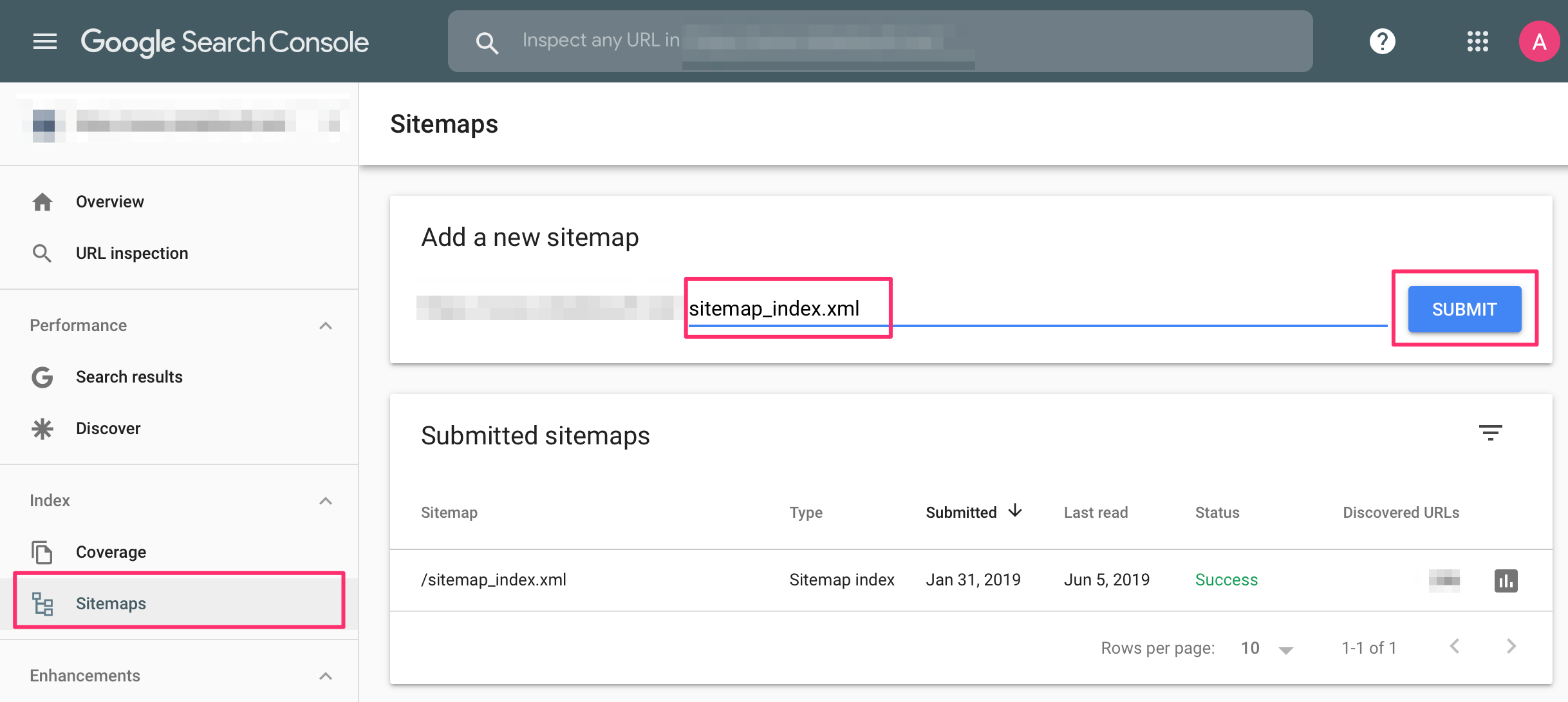
The robot.txt file is a text file that informs search engine crawlers about which parts of your website they are allowed to access and crawl. It serves as a set of instructions for search engine bots, helping you control how your website content is indexed. Below are some effective tips that can help you improve your robot.txt file:
- Understand the syntax: Familiarize yourself with the syntax and rules of robots.txt files. Ensure your robots.txt file follows the correct formatting and adheres to the guidelines set by search engines.
- Specify important directories and files: Use the robots.txt file to specify directories or files that should not be crawled by search engines. This is particularly useful for confidential or sensitive information that you don’t want to be indexed.
- Test your robots.txt file: Use the testing tools provided by search engines or third-party tools to verify that your robots.txt file is properly configured and accessible. This ensures that search engine bots can understand and respect the directives specified in the file.
- Regularly review and update: Periodically review and update your robots.txt file to reflect changes in your website’s structure or content. Remove any outdated directives or add new ones as needed to maintain proper control over search engine crawling.
- Allow access to essential resources: Ensure that search engine bots can access necessary resources such as CSS, JavaScript files, and images. This enables proper indexing and rendering of your web pages.
Keyword Research
Keyword research involves identifying and analyzing the specific words and phrases people use when conducting online searches. This process helps website owners and marketers understand the language and intent of their target audience, allowing them to optimize their content and improve their visibility in search engine results.
Find Effective Keywords
Keywords are the phrases that people use when searching online. They are the terms you want to focus on to ensure that your products are visible to potential customers.
While you can have multiple keywords, it’s important to distribute them strategically. The goal is to inform Google about the content of each page on your site so that it appears in relevant searches. Instead of targeting several keywords for each page, it’s best to concentrate on one or two terms for each product, page, or category.

Now, how do you determine the right keywords to use? Here are some helpful tips:
- Start with what you know: Make a list of the products or services you offer and related terms. For example, if you sell pet products, your list may include terms like ID tags, toy mice, or dog food. These terms can be broad in nature.
- Look at the data: Analyze any current analytics and data you have to identify the keywords people are already using to find your website. Tools like Google Analytics and Moz Keyword Explorer can provide valuable insights in this regard.
- Get specific: Narrow down your keywords and focus on your unique products or differentiators. General keywords like dog food may be highly competitive, so it’s beneficial to target more specific terms such as organic dog food for puppies or custom hand-stitched dog tags.
- Balance search volume with competition: Aim for keywords that have a significant search volume, but also consider their competitiveness. While it’s desirable to target terms that many people search for, it’s essential to choose keywords that are achievable for your website. Tools like Google Keyword Planner can assist you in finding data for each keyword.
- Consider user intent: User intent refers to the intention or goal behind a search query. For an eCommerce store, a favorable user intent would be to make a purchase. Analyze keywords to understand the intent behind each search. For instance, someone searching for average pet store revenue may be seeking information about starting their own company, while someone searching for pet stores with overnight shipping likely wants to make an immediate purchase. Prioritizing keywords that indicate purchase intent can be a more effective strategy.
If you’re a newbie in keyword research, there’re some free and paid tools that we recommend you use to gather competitive insights. Numerous tools are available including Google Keyword Planner, Ahrefs, Keyword Surfer, and MozBar. For instance, Keyword Surfer enables you to enter keywords into Google and view their search volumes directly in the address bar and search engine results page (SERP). On the other hand, MozBar provides valuable information about a website’s domain authority and page authority, indicating its reputation, strength, and trustworthiness. These tools aid in understanding your competition and refining your keyword strategy.
Consider Long-tail Keywords
When conducting keyword research, it’s important to consider the potential of long-tail keywords. Long-tail keywords are longer, more specific phrases that target a niche audience and typically have lower search volume compared to broader keywords.

Here’s why you should pay attention to long-tail keywords:
- Targeted Audience: Long-tail keywords allow you to target a specific audience that is more likely to convert. By using more specific phrases, you attract users who are searching for exactly what your business offers, increasing the chances of driving qualified traffic to your website.
- Less Competition: Long-tail keywords often have lower competition compared to broader, generic keywords. This means that you have a better opportunity to rank higher in search engine results for these targeted phrases, improving your visibility and attracting relevant traffic.
- Higher Conversion Rate: Since long-tail keywords cater to users who have a clear intent, they tend to have a higher conversion rate. When people search using specific phrases, it indicates that they are looking for something particular and are more likely to take action or make a purchase.
- Enhanced Relevance: Long-tail keywords enable you to align your content more precisely with user search queries. By incorporating specific phrases related to your products or services, you create content that directly addresses the needs and interests of your target audience, resulting in higher relevance and better user experience.
- Voice Search Optimization: With the rise of voice assistants and voice search, long-tail keywords have become even more significant. People tend to use natural language when speaking their search queries, leading to longer and more specific phrases. Optimizing for long-tail keywords can help you capture voice search traffic and provide relevant answers to voice queries.
After you gather all the data from keyword research tools, it is important to determine how to utilize it effectively. Start by narrowing down your focus on a long-tail keyword that complements your short-tail keyword. Short-tail keywords are often highly competitive to rank for, particularly for new or emerging businesses. Therefore, it is crucial to identify your unique selling proposition or differentiator. Remember, your business gained an edge in the market through a unique selling proposition, so leverage that to create a long-tail keyword that enhances the discoverability of your product and drives more targeted traffic to your website.
When incorporating long-tail keywords into your SEO strategy, ensure they are relevant to your content and align with the search intent of your target audience. Remember to create high-quality, informative, and engaging content that fully satisfies the user’s query and offers a solution to their needs.
Onpage SEO Practices for eCommerce sites
Onpage SEO refers to the practice of optimizing individual web pages to improve their visibility and rankings in search engine results. It involves optimizing various elements on the webpage itself, such as content, HTML tags, and site architecture, to make it more relevant and appealing to both users and search engines.
Focus on Your Meta Title and Description
The meta title and description are important elements for on-page SEO. The meta title is an HTML tag that specifies the title of a webpage. It appears as a clickable headline in search engine results and is crucial for attracting users to click on your webpage. It should be concise, compelling, and accurately represent the content of the page. Including your target keyword in the meta title can also help with search engine rankings.

The meta description is a brief summary of the webpage’s content. It appears below the meta title in search engine results and provides additional information to users about what they can expect on the page. While search engines don’t directly consider meta descriptions for rankings, a well-crafted and keyword-rich meta description can improve click-through rates.
To optimize your meta title and description:
- Keep them within recommended character limits: Aim for a meta title length of around 55-65 characters and a meta description length of around 150-160 characters. This ensures that they are fully displayed in search results and aren’t truncated.
- Include target keywords: Incorporate relevant keywords in both the meta title and description to make them more aligned with search queries. This can help improve visibility and relevancy in search results.
- Make them compelling: Craft enticing meta titles and descriptions that grab users’ attention and entice them to click on your webpage. Use action-oriented language, highlight unique selling points, and create a sense of urgency or curiosity.
- Maintain relevance: Ensure that both the meta title and description accurately reflect the content of the webpage. Avoid misleading or exaggerated claims, as this can negatively impact user experience and credibility.
- Unique meta title and description: Ensure that each page on your website has a distinct meta title and description. Avoid using the same tags for multiple pages, as this can lead to confusion for both search engines and users.
eCommerce Category and Product Descriptions
When it comes to eCommerce, category, and product descriptions are crucial for engaging customers and driving sales. It can be challenging to narrow down categories when starting an eCommerce brand, and as you grow, you may expand into new categories. However, it’s the most important thing to avoid duplicating categories.
For new eCommerce brands, it’s advisable to focus on a primary keyword for each category. You can refer to the earlier keyword research example to identify a keyword you want to target. On the other hand, if you’re an established eCommerce brand, conducting a website audit is recommended to identify any duplicate categories. For instance, categories like Women’s Winter Coats, Winter Coats for Women, and Women’s Coats for Winter may cannibalize each other and harm your SEO efforts.

About the products page, there are no strict guidelines for writing effective descriptions for search engines. As you may know, every product page should go beyond displaying only the price, photo, and title. It should also include a comprehensive description that effectively sells the item to both shoppers and search engines. There are some key points to keep in mind for an optimal eCommerce SEO strategy.
- Highlight Key Features and Benefits: Clearly outline the key features and benefits of the product. Explain how it solves a problem or improves the customer’s life. Focus on the value proposition and unique selling points.
- Be Descriptive and Engaging: Paint a vivid picture of the product by using descriptive language. Use sensory words to create an emotional connection with the customer. Show how the product can enhance their experience or fulfill a desire.
- Use Bullet Points and Subheadings: Break down information into easy-to-read sections using bullet points or subheadings. This improves readability and allows customers to quickly scan and find relevant details.
- Incorporate Keywords Naturally: Include relevant keywords in your product descriptions, but ensure they flow naturally within the content. Keyword stuffing can harm readability and user experience.
- Provide Accurate and Detailed Information: Be transparent and provide accurate information about the product’s specifications, dimensions, materials used, and any limitations. Address potential customer questions or concerns preemptively.
- Create a Sense of Urgency: Encourage customers to take action by creating a sense of urgency. Highlight limited quantities, time-limited offers, or exclusive deals to motivate them to make a purchase.
Structure Your Data with Schema Markup
Once you have improved your product content, it’s time to consider adding some technical features to your eCommerce website. One essential feature to incorporate is structured data markup.
In simple terms, structured data markup provides additional information about your products even before a user visits your website. It also helps you rank for Rich Snippets, a common Google search feature in the eCommerce realm.
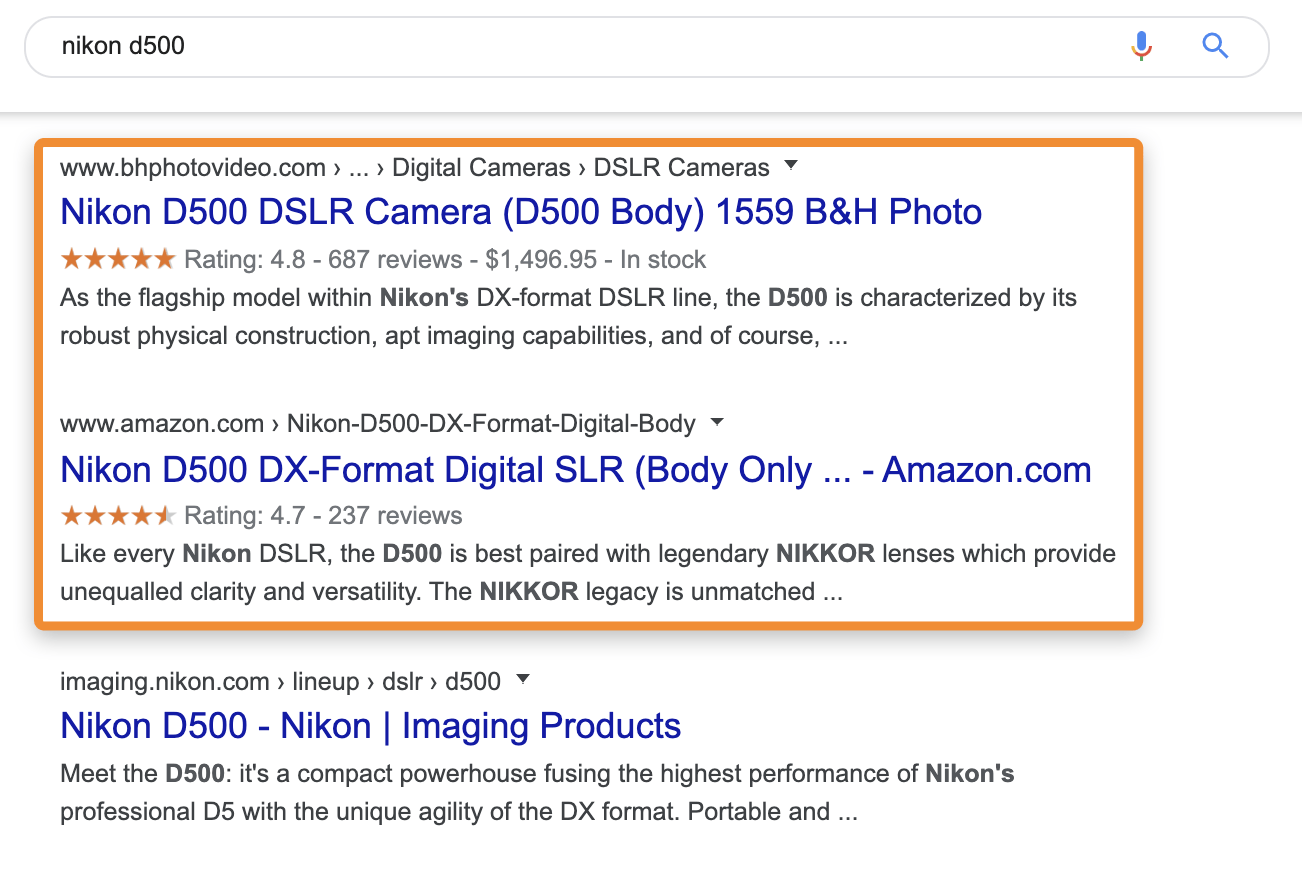
Star ratings and review counts hold significant importance for SEO, as well as attracting more click-throughs from search results. According to data from Search Engine Journal, nearly half of consumers would hesitate to consider a product with less than a 4-star rating.
There are two methods to enable structured data for your products. The first option is to manually add it yourself. If you are technically proficient and interested in trying it, Google provides a helpful article that explains the process along with code snippets that you can easily copy and paste.
The second option is to use an app or plugin. If you have an eCommerce-platform-based storefront, there are several top-rated structured data apps or extensions available that you can consider adding to your store. The advantage of using these apps is that they automatically add the necessary markup to your products without requiring manual intervention. However, it’s important to note that some of these apps may have a monthly fee associated with them.
Both methods have their pros and cons. Manually adding structured data allows for more control and customization, but it requires technical expertise. On the other hand, using an app or plugin simplifies the process but may come with additional costs.
Building Link System
Building a robust link system is crucial for improving the visibility and authority of your website. This involves two key components: internal linking and external linking.
Internal linking refers to the practice of linking to other pages within your own website. It helps establish a hierarchical structure and improves navigation for users and search engines. By incorporating internal links to your products, categories, and blog pages, you distribute link equity to those pages. The presence of multiple internal links pointing to specific products or pages serves as a signal to Google, indicating that these pages are important and deserving of higher priority. Here are some best practices for internal linking:
- Use descriptive anchor text: When creating internal links, use relevant and descriptive anchor text that accurately reflects the destination page’s content. Avoid using generic terms like click here or read more.
- Link to relevant and related content: Ensure that the pages you link to are contextually relevant and provide additional value to users. This not only improves user experience but also helps search engines understand the relationship between pages.
- Maintain a logical structure: Organize your internal links in a logical and hierarchical manner. Consider the importance and relevance of each page when deciding which pages to link to and how they should be interconnected.
- Avoid excessive linking: While internal linking is beneficial, avoid excessive or unnecessary links within your content. Focus on quality over quantity, and only include links that add value to the user experience.

External linking involves linking to reputable and relevant websites outside of your own. It helps establish credibility, authority, and signals to search engines that your website is part of a broader network of trusted resources. However, we don’t recommend you overuse this method because it can lose your website’s power. Consider these tips for effective external linking:
- Link to authoritative sources: When linking externally, choose reputable and high-quality websites that provide valuable information related to your content. This enhances the credibility and reliability of your own content.
- Use natural and relevant anchor text: Similar to internal linking, use descriptive and relevant anchor text when linking externally. This helps both users and search engines understand the purpose of the link and its destination.
- Prioritize relevance: Ensure that the external links you include are relevant to your content and provide additional value to users. Avoid linking to unrelated or low-quality websites, as it can negatively impact your own credibility.
- Practice moderation: Be mindful of the number of external links you include in your content. While it’s beneficial to reference and cite external sources, excessive linking may distract users or dilute the focus of your own content.
Optimize Images for SEO
Search engines not only analyze the text on your web pages but also crawl and index your images. Optimizing your images doesn’t mean compromising their beauty. In fact, it helps showcase and present your images to potential customers effectively.

Optimizing your product images can have a significant impact on the success of your store. According to HTTP Archive, images account for approximately 46% of the average web page’s overall size. If images are not optimized, they can significantly slow down page loading times. You can follow these simple tips to further reduce image file sizes and enhance their discoverability and indexability by search engines:
- Reduce file size: Compress your images to ensure they have a smaller file size without compromising quality. This helps improve page loading speed, which is crucial for a positive user experience and better SEO performance.
- Use descriptive filenames: Give your image files meaningful names that accurately describe the content. Avoid generic or random names like IMG_001.jpg as they provide little context to search engines and users. Instead, use descriptive filenames that include relevant keywords.
- Optimize alt tags: Alt tags provide alternative text for images, serving as valuable information for search engines and users who cannot view the images. Write descriptive and keyword-rich alt tags that accurately describe the image content and context.
- Choose the right image format: Use the appropriate image format based on the type of image. JPEG is suitable for photographs and complex images, while PNG is ideal for graphics and images with transparency. Using the right format helps maintain image quality while reducing file size.
- Consider image dimensions: Resize your images to match the display dimensions on your website. Avoid using oversized images that can slow down page loading. Optimizing image dimensions improves performance and ensures images fit well within the layout.
- Utilize image sitemaps: Include your product images in the sitemap to make them more discoverable by search engines. This improves indexing and visibility in image search results.
- Test for responsiveness: Ensure that your images are responsive and adapt well to different devices and screen sizes. Responsive images contribute to a seamless user experience across various platforms.
Avoid Duplicated Content
Duplicate content refers to text that appears in multiple locations online, whether it is on your own website or someone else’s. Search engines like Google consider duplicate content problematic because it creates confusion. They struggle to determine which version is accurate and should be ranked.

To avoid duplicate content issues for your online store, consider the following:
- Avoid Copying Manufacturer Descriptions: When adding product descriptions, refrain from simply copy-pasting manufacturer descriptions. This is especially important if you drop-ship products. Instead, strive to create unique descriptions that add value and provide a fresh perspective. Stand out from other sellers who may be using the same default descriptions.
- Write Unique Descriptions for Each Product: Resist the temptation to reuse the same description for similar products. Creating unique descriptions for each product helps maintain the individuality of your pages and prevents the dilution of search engine rankings. Take the time to highlight the distinctive features and qualities of each product.
- Review Your URL Structure: Be vigilant about your URL structure to ensure it doesn’t contribute to duplicate content issues. Watch out for session IDs, tracking links, and pagination problems. Yoast provides detailed guidance on addressing these technical challenges.
Offpage SEO for Backlinks
Offpage SEO refers to the activities conducted outside of your website that can positively impact your search engine rankings and overall online visibility. While on-page SEO focuses on optimizing your website’s content and structure, offpage SEO revolves around building your website’s reputation, authority, and relevance across the internet.
Utilize Organic Backlinks Instead of Exchange Backlinks
Exchanging backlinks, also known as reciprocal linking, involves two websites agreeing to link to each other’s content. While this practice was more common in the past, it is no longer considered a preferred approach in off-page SEO. Search engines, like Google, now place more emphasis on natural and organic backlinks.
It’s important to understand that exchanging backlinks solely for the purpose of manipulating search engine rankings can be seen as a violation of search engine guidelines. This can potentially result in penalties and negatively impact your website’s visibility.
Engaging in mass backlinking practices can also be risky as search engines like Google can perceive it as spam or an attempt to manipulate search results. Consequently, your website may face penalties or other negative consequences.

Instead of focusing on backlink exchanges or mass backlinking, it is advisable to concentrate on building high-quality backlinks through organic means. This involves creating valuable content that naturally attracts links from other websites. Here are some effective strategies for building organic backlinks:
- Create Compelling Content: Produce high-quality, informative, and engaging content that others will find valuable and want to link to. This can include blog posts, guides, infographics, videos, and other forms of content that resonate with your target audience.
- Guest Blogging: Contribute guest posts to reputable websites in your industry or niche. This allows you to showcase your expertise, gain exposure to a new audience, and earn backlinks from the host website.
- Influencer Outreach: Build relationships with influencers or thought leaders in your industry. By collaborating with them on the content or having them endorse your brand, you can naturally earn backlinks from their websites or social media profiles.
- Content Promotion: Actively promote your content through social media, email marketing, and other channels to increase its visibility. The more people see your content, the higher the likelihood of it being shared and linked to.
- Online PR and Digital Outreach: Engage in digital outreach efforts to pitch your content or brand to relevant websites and publications. If your content is newsworthy or provides valuable insights, it may attract media coverage and earn authoritative backlinks.
Remember to prioritize the quality and relevance of backlinks rather than focusing solely on quantity. Earn backlinks naturally by delivering value through your content, fostering relationships, and leveraging creative link-building techniques.
Engage with Bloggers and Influencers
One effective eCommerce SEO strategy is to promote your online store by reaching out to relevant bloggers within your industry. To start, analyze which influencers are endorsing products from your competitors or reputable websites in your niche.
Once identified, you can approach these influencers (or websites) and ask them to feature your promotional offers on their blogs. While some bloggers and organizations may do it for free, others might require payment. Regardless, don’t forget to request backlinks as well, as bloggers are generally willing to include them.

Another approach is to request guest posting opportunities on bloggers’ websites. Present them with intriguing and controversial topics. Brainstorm similar thought-provoking topics that can help expand your eCommerce business through collaborations with industry bloggers.
If you come across another party interested in a link exchange, you can consider this approach as well. Simply add a link to their store on your website, and they will reciprocate by adding a link to your store on theirs. However, when exchanging links with bloggers, ensure that the links are placed on their high-traffic pages. Always prioritize link exchanges that make sense and avoid participating in any link schemes.
By actively engaging with bloggers and influencers, you can leverage their audiences and networks to enhance the visibility and reputation of your eCommerce store. Building relationships, securing backlinks, and guest posting can contribute to increased website traffic, brand exposure, and improved search engine rankings.
Content Marketing
Content marketing is a strategic approach to creating and distributing valuable, relevant, and consistent content to attract and engage a target audience. It is aimed at driving profitable customer actions, such as increased brand awareness, website traffic, lead generation, and customer conversions.
Start Blogging
Blogging is a proven strategy to attract more traffic to your online store and can yield long-term benefits for your brand. While starting a blog may seem daunting, it offers numerous advantages. By creating blog posts, you can target a range of relevant keywords related to your products and industry. This helps your blog posts rank in search engine results, driving more views to your product pages and increasing the likelihood of generating sales.
Even when blog posts don’t directly generate revenue, they provide valuable product education and contribute to building your brand voice. Blogs can serve as a platform to showcase your expertise, share industry insights, and connect with your audience on a deeper level.

To maximize the impact of your blog content, it’s important to actively promote it through social media and other marketing channels. By sharing your blog posts across platforms, you can increase traffic, engagement, and brand visibility. Consistently producing high-quality blog content that is optimized for search engines will also improve the SEO of your online store, attracting more visitors and potential customers.
Optimize Product Page Content
Optimizing the content on your product pages is a crucial aspect of this eCommerce SEO best practice. It involves incorporating relevant keywords into your product descriptions while providing sufficient information to satisfy search engines and potential customers. Here are some tips to help you optimize your product page content:
- Craft persuasive product descriptions: Create clear, concise, and informative product descriptions that highlight the key features and benefits of your products. Use language that resonates with your target audience and remember to include relevant keywords for SEO purposes.
- Utilize high-quality product images: Use high-resolution product images that accurately represent your products and showcase them from various angles. High-quality visuals can significantly enhance the appeal and trustworthiness of your product pages.
- Provide detailed product specifications: Include comprehensive product specifications such as size, weight, materials, and any other relevant details. This helps potential customers make informed purchasing decisions and reduces the likelihood of returns or dissatisfaction.
- Showcase customer reviews: Display customer reviews prominently on your product pages to build trust and credibility. Encourage customers to leave reviews and ensure they are easily accessible to potential buyers.
- Optimize for mobile devices: As more people use mobile devices for online shopping, it’s crucial to optimize your product pages for mobile. Ensure that your pages are mobile-friendly, easy to navigate, and load quickly on mobile devices to provide a seamless user experience.
Optimize Other Essential Page Content
To optimize the SEO of your eCommerce store, it is crucial to go beyond product page content and optimize the content of other essential pages. These include the homepage, about us page, contact page, terms and conditions page, checkout page, and partnership/voucher pages. Here are some key considerations for optimizing these pages:
- Homepage: Incorporate relevant keywords in the headline, subheadings, and body content. Clearly communicate your brand, products, and services, and include a compelling call-to-action to encourage further exploration.
- About Us Page: Share your brand story, highlighting what sets your business apart. Use keywords that reflect your brand’s values and mission. This page is an opportunity to build trust and establish a connection with your audience.
- Contact Us Page: Provide complete contact information, including phone number, email address, and physical address. Include a user-friendly contact form to facilitate easy communication with visitors.
- Terms and Conditions Page: Optimize this page by using relevant keywords related to your store and products. Clearly outline your policies and procedures to ensure transparency for customers.
- Checkout Page: Optimize the checkout process for both search engines and user experience. Use descriptive and keyword-rich page titles and meta descriptions. Ensure a smooth and intuitive checkout process for seamless conversions.
- Partnership/Voucher Pages: These pages can also benefit from SEO optimization. Include relevant keywords and detailed information about your partnerships and offers. Make sure these pages are easily accessible and properly linked to other pages on your site.

By optimizing the content on these essential pages, you can enhance your eCommerce store’s overall SEO performance, improve search engine visibility, and provide a seamless user experience for your visitors.
Utilize User-generated Content
User-generated content refers to any content created and shared by users or customers of your eCommerce store. It can include reviews, testimonials, social media posts, images, videos, and more. User-generated content is valuable because it provides authentic and unbiased opinions about your products or services, helping to build trust and credibility among potential customers.

Here’s how you can use user-generated content for eCommerce SEO:
- Reviews and Testimonials: Encourage your customers to leave reviews and testimonials on your website or third-party review platforms. These reviews not only provide valuable insights to other customers but also contribute to SEO by adding unique and keyword-rich content to your product pages.
- Social Media Engagement: Engage with your customers on social media platforms and encourage them to share their experiences with your products using branded hashtags or tagging your brand. Curate and showcase these user-generated posts on your website or social media channels to enhance your brand’s authenticity and SEO.
- Visual Content: User-generated visual content such as photos and videos can be highly influential in driving conversions. Encourage customers to share their visual experiences with your products and feature this content on your website. Optimize the visual content with relevant keywords to boost SEO.
- User Stories and Case Studies: Request customers to share their success stories or case studies about how your products have benefited them. Feature these stories on your website or blog, ensuring they are properly optimized with relevant keywords. This helps create unique and compelling content that resonates with your audience and improves SEO.
- Social Proof: User-generated content serves as social proof, showing potential customers that others have had positive experiences with your brand. Highlight user-generated content, such as testimonials or reviews, prominently on your website to build trust and credibility, ultimately boosting SEO.
- Engage and Share: Actively engage with users who create user-generated content by liking, commenting, and sharing their posts. Seek permission to share their content on your own platforms, giving proper credit. This not only strengthens the relationship with your customers but also encourages more user-generated content.
In Conclusion,
To ensure your eCommerce store gets noticed by potential customers searching for products in your niche, it’s crucial to understand how search engines work and optimize your site accordingly. While SEO may initially seem daunting, it can be simplified by making tweaks to your pages and incorporating relevant keywords. With the comprehensive eCommerce SEO best practices provided above, we aim to assist you in improving your store’s visibility in search engine results, driving more traffic to your website, and ultimately increasing sales.
If you encounter any challenges while optimizing your store to align with SEO best practices, our team of experts is ready to support you. Feel free to reach out to us with any questions or concerns you may have.











